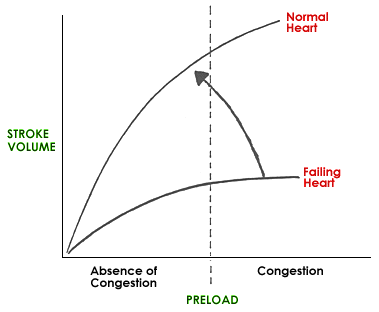Back to Course
Cardiovascular Physiology and Pathophysiology
0% Complete
0/0 Steps
-
Physiology
Structure and Function4 Topics -
Lymphatics and Edema Formation
-
The Microcirculation
-
Vascular Control3 Topics
-
The Cardiac Cycle
-
Determinants of Myocardial Performance7 Topics
-
Neuro-Control of Heart and Vasculature4 Topics
-
Electro-Mechanical Association4 Topics
-
Electrical Side of the Heart4 Topics
-
PathophysiologyDefining Heart Failure
-
Causes of Heart Failure
-
MVO2 and Heart Failure
-
Cardiac Output and Heart Failure7 Topics
-
Compensation for Circulatory Failure
-
Vascular Tone in Heart Failure
Lesson 13,
Topic 4
In Progress
Contractility
Lesson Progress
0% Complete
Contractility refers to the inherent strength of the myocardium (ability to shorten). Inotropy is the term used to describe the contractile state of the heart.
How do changes in contractility change cardiac performance?
An increase in contractility results in:
- an increase in stroke volume (amount of blood ejected from the chamber with each beat).
- a reduction in preload (more complete emptying of the chamber). If pulmonary edema or effusions were present they may resolve with the reduction in preload.
- an increase in myocardial oxygen consumption. Thus, if a perturbation results in an increase in contractility, hopefully cardiac output increases sufficiently to provide for the increased demand for oxygen that the increase in contractility will require.
As contractility falls one can anticipate the opposite effects.

As contractility increases the Frank-Starling function curve shifts upward and to the left. The opposite occurs with a reduction in contractility.
How are changes in contractility detected on physical examination?
A fall or an increase in contractility can not be detected on physical examination as different from any other cause of a decrease or increase in cardiac output.
The best diagnostic aid to detect a change in contractility is the echocardiogram (cardiac ultrasound examination).
